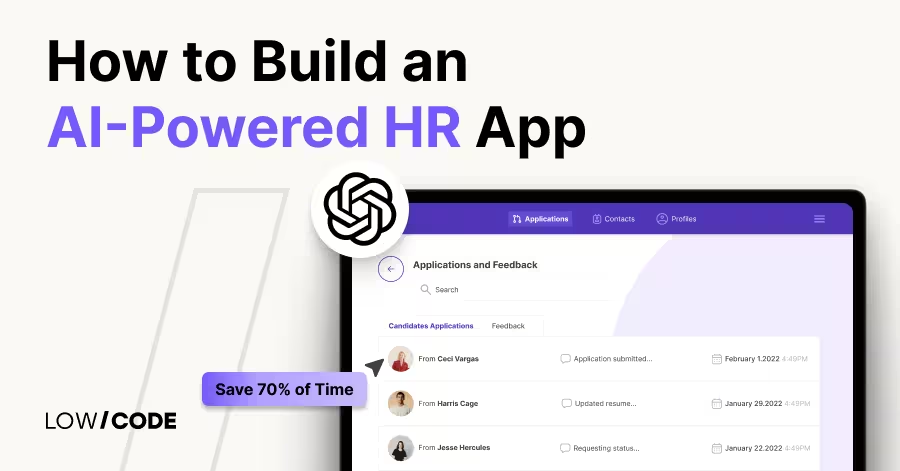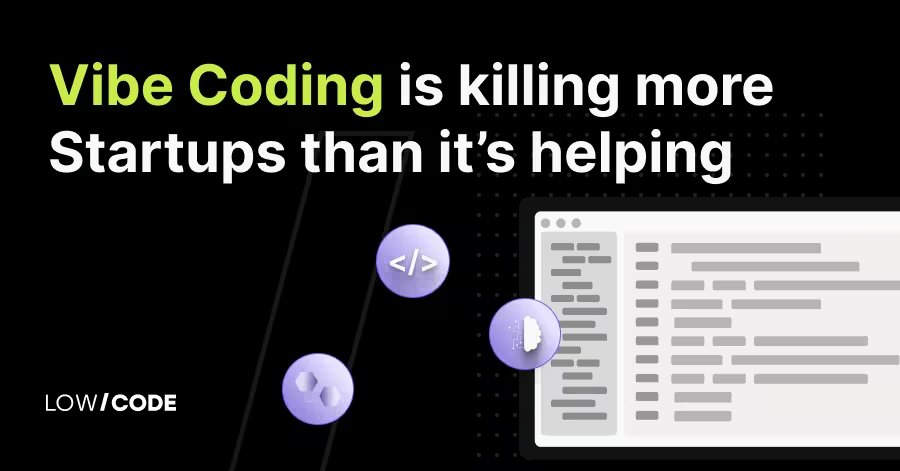Why Serious Founders Outgrow Lovable (Fast)
13 min
read
Serious founders outgrow Lovable.dev fast. Discover its limits in scale, security, and cost, and why no-code/low-code is the smarter alternative
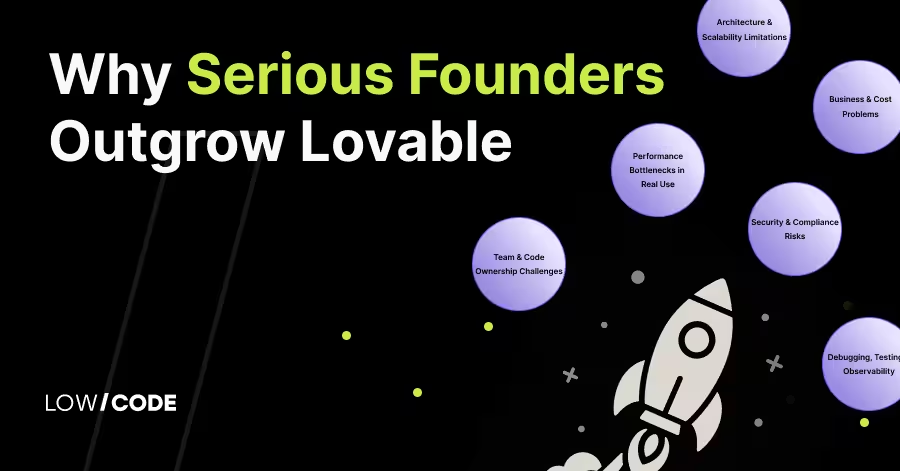
Why Lovable Feels Great at First
Lovable.dev emerged quickly in the startup world because it promised founders the ability to spin up apps in hours with almost no technical expertise. For cash-strapped or idea-stage founders, this speed felt revolutionary.
By combining AI-driven scaffolding with instant deployments, Lovable positioned itself as the easiest path to an MVP.
- Ultra-fast prototypes with minimal learning curve
- Affordable entry point for non-technical founders
- Instant gratification through working demos in days, not months
- Credit-based model: Costs appear predictable and affordable for early, lightweight projects.
But while the tool delivers on speed, it lacks the flexibility, scalability, and structure that serious founders need as they validate, scale, and compete. That’s why most quickly graduate to robust no-code platforms like Bubble, FlutterFlow, or Glide.
Architecture & Scalability Limitations
Lovable’s strength in rapid prototyping becomes its biggest weakness once startups grow beyond simple MVPs. The platform is optimized for speed, not resilience, and that shows in its architecture.
- Weak long-term architecture
Apps rely on simplified scaffolding that works for demos but crumbles under higher user loads or complex workflows. What feels “done” at first quickly proves unsustainable. - Inflexible data structures
Founders are boxed into rigid data models. Adding relationships, optimizing queries, or restructuring databases later is nearly impossible without painful rewrites. - Tightly coupled logic
Business logic and UI are intertwined, making every change risky. Scaling features requires tearing apart earlier work instead of building on it. - Technical debt accumulates fast
Quick fixes pile up. By the time growth arrives, founders face instability, higher costs, and limited scalability.
Robust no-code platforms like Bubble and FlutterFlow solve these issues by offering structured database design, modular logic, and scalability-first architecture—tools serious founders need for long-term growth.
Read more | How to Build an AI Nutritionist App
Performance Bottlenecks in Real Use
What looks smooth in a demo often fails under real-world conditions, and Lovable is no exception. Once user traffic increases or workflows get more complex, performance cracks start to show.
- Async/database transaction slowdowns
The platform struggles with managing complex queries or multiple transactions at once, leading to noticeable lags in user experience. - Breaks under heavy user load
MVPs may work for a few dozen testers, but once hundreds or thousands of users join, systems crash or stall, limiting growth potential. - Poor SEO and mobile performance optimization
Apps generated on Lovable often lack fine control over page speed, metadata, and responsive design, hurting discoverability and user satisfaction.
Startups can’t afford apps that choke under growth. Platforms like Bubble and FlutterFlow offer optimization tools, better hosting, and scalable infrastructure built for real-world performance.
Read more | AI fitness app development guide
Debugging, Testing & Observability
For early demos, Lovable hides complexity, but when issues arise, the lack of proper debugging and observability quickly becomes a nightmare. Startups end up blind to what’s breaking and why.
- Vague error messages
Founders see generic failures with no clear root cause, wasting valuable time. - Inconsistent generated code
AI-created code can vary widely, making bugs unpredictable and harder to reproduce. - Limited testing support
There’s little or no provision for unit tests, integration testing, or load testing – critical for reliable scaling. - No monitoring or audit tools
Without logs, performance metrics, or audit trails, diagnosing problems or proving compliance becomes nearly impossible.
By contrast, mature no-code platforms like Bubble and FlutterFlow provide structured workflows, automated deployments, and integrations for monitoring, ensuring that teams can test, track, and troubleshoot effectively.
Read more | AI business process automation guide
Security & Compliance Risks
When handling sensitive data, cutting corners in security is fatal. Lovable’s simplicity makes it attractive, but it leaves serious gaps that founders cannot ignore.
- Authentication gaps
Role-based access control (RBAC) is limited, making it harder to separate permissions for admins, agents, and end-users. Encryption practices are inconsistent. - Misconfigured databases
Generated code can leave databases open to exploits or data leaks if not manually secured. Founders often lack visibility until it’s too late. - No GDPR/HIPAA support
Apps in healthcare, fintech, or real estate cannot risk compliance violations. Lovable doesn’t provide clear frameworks for regulated industries.
By contrast, platforms like Bubble, Glide, and FlutterFlow include enterprise-grade security settings, audit trails, and compliance-ready hosting.
Read more | Best no-code AI app builders
Team & Code Ownership Challenges
Building a business means eventually handing off the product to new developers or scaling teams. With Lovable, that’s a challenge.
- Hard for new devs to work with generated code
AI-generated structures are inconsistent and undocumented, slowing onboarding. - Vendor lock-in
Even with “code export” options, the exported product is often messy, unusable, or too tied to Lovable’s system. - Migration costs are high
Moving to robust platforms later requires expensive rewrites, adding delays during critical growth stages.
True code ownership requires clarity and maintainability—qualities Lovable lacks but serious no-code tools are built around them.
Read more | How to hire AI app developers
Business & Cost Problems
At first, Lovable feels cheap, but as usage grows, the cracks show in both pricing and support.
- Credit-based model becomes expensive
What looked affordable for an MVP quickly scales into unpredictable costs for production use. - Poor documentation and support
Founders are often left in the dark with limited resources or inconsistent help from the platform. - Generic UI and limited design
Lovable’s templates produce apps that look alike, making it harder for startups to stand out or create a strong brand identity.
Established no-code platforms offer predictable pricing, professional UI libraries, and reliable support, giving founders confidence as they scale.
Read more | How to build an AI project manager app using no-code
What Serious Founders Actually Need
Speed is important, but serious startups require more than a demo—they need infrastructure that lasts.
- Reliable, scalable architecture to handle traffic and growth
- Performance under real-world conditions without bottlenecks
- Strong security and compliance to protect users and meet regulations
- Testing, monitoring, and observability for stability and trust
- Smooth collaboration and ownership so teams can grow efficiently
- Predictable cost structure that supports scaling without financial shocks
Platforms like Bubble, FlutterFlow, and Glide are purpose-built to deliver these foundations, making them the smarter choice for founders aiming at long-term success.
Read more | How to build an AI agent in Slack
Why Choose No-code/low-code Development Over Vibe Coding
Founders often face a choice between vibe coding, traditional development, or no-code/low-code platforms. No-code/low-code has emerged as the smarter path, balancing speed, cost, and long-term sustainability.
- Faster and cheaper than traditional development
With visual tools and prebuilt components, apps can launch in weeks rather than months. Costs are typically 60–80% lower, allowing founders to validate ideas without exhausting capital. - Safer, more maintainable, and more structured than vibe coding
Unlike AI-generated code that is inconsistent and fragile, no-code platforms enforce clear structures, modular workflows, and clean databases. This ensures apps remain reliable and easier to update. - Scalable apps with strong foundations
Platforms like Bubble, FlutterFlow, and Glide support robust architectures, APIs, and role-based permissions. Startups can begin with an MVP and confidently grow into enterprise-grade applications. - AI-ready and designed for long-term use
No-code ecosystems integrate seamlessly with AI, automation, and analytics tools, ensuring apps remain adaptable as technology evolves. - Proven track record across industries
From startups to SMBs and enterprise operations, no-code has powered thousands of apps, demonstrating its reliability and flexibility.
No-code/low-code gives founders the speed of vibe coding with the discipline of professional engineering – a foundation built to last.
Read more | AI Contract Management
Why Work with LowCode Agency
At LowCode Agency, we’re not just another dev shop delivering features—we act as your dedicated product team. Our role is to challenge assumptions, refine requirements, and guide decisions so that every feature you build aligns with long-term business growth.
We work as strategic partners invested in your success, not just order takers.
- Proven leadership in no-code: We are the largest and leading Glide agency globally, a Bubble silver partner, and specialists in FlutterFlow. This breadth of expertise lets us choose the right platform for your needs rather than forcing every project into the same mold.
- Scalable, AI-ready solutions: From MVPs to enterprise-grade apps, we build products with scalability, automation, and AI integrations at their core – so your product grows as your business does.
- Selective, high-impact partnerships: We deliberately take on fewer projects to give each client deep focus and deliver results that last beyond launch.
With 350+ apps built across industries, we know how to transform ideas into sustainable, future-proof products. LowCode Agency is where serious founders turn when they want more than prototypes – they want lasting impact.
Ready to build your next digital product that scales as your business does? Let's talk! And discover how we can build a scalable, future-ready project together
Created on
October 22, 2025
. Last updated on
December 11, 2025
.

FAQs
What makes serious founders outgrow Lovable so quickly?
Is Lovable good enough for scaling a startup beyond MVP stage?
What problems do founders face with Lovable compared to no-code platforms like Bubble or FlutterFlow?
How does vendor lock-in with Lovable affect long-term product growth?
Why is no-code/low-code development a smarter alternative for serious founders?
How does LowCode Agency help startups build scalable, AI-ready apps compared to Lovable?







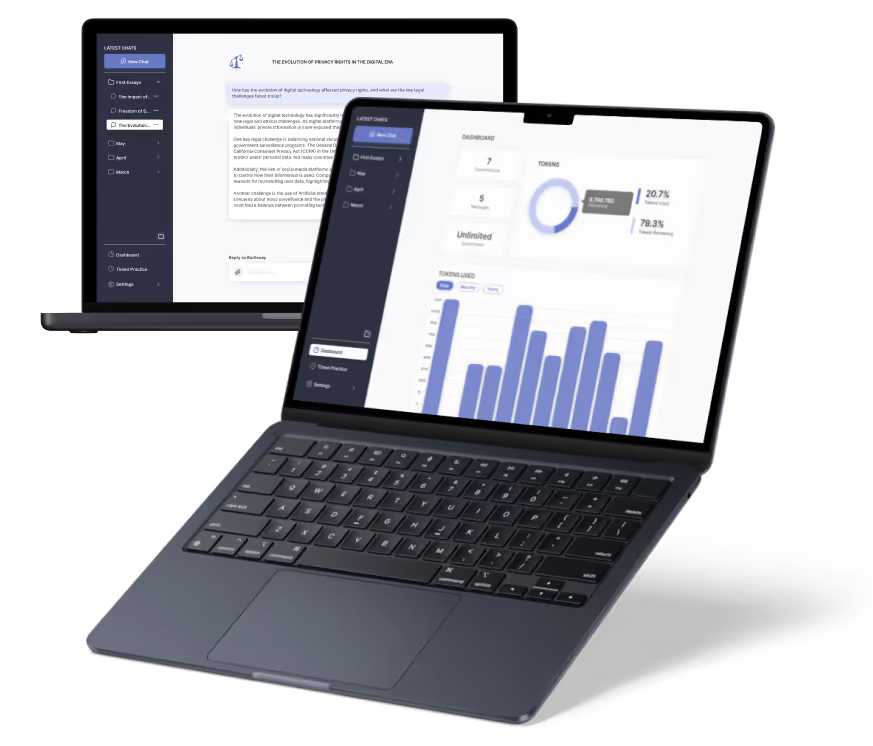
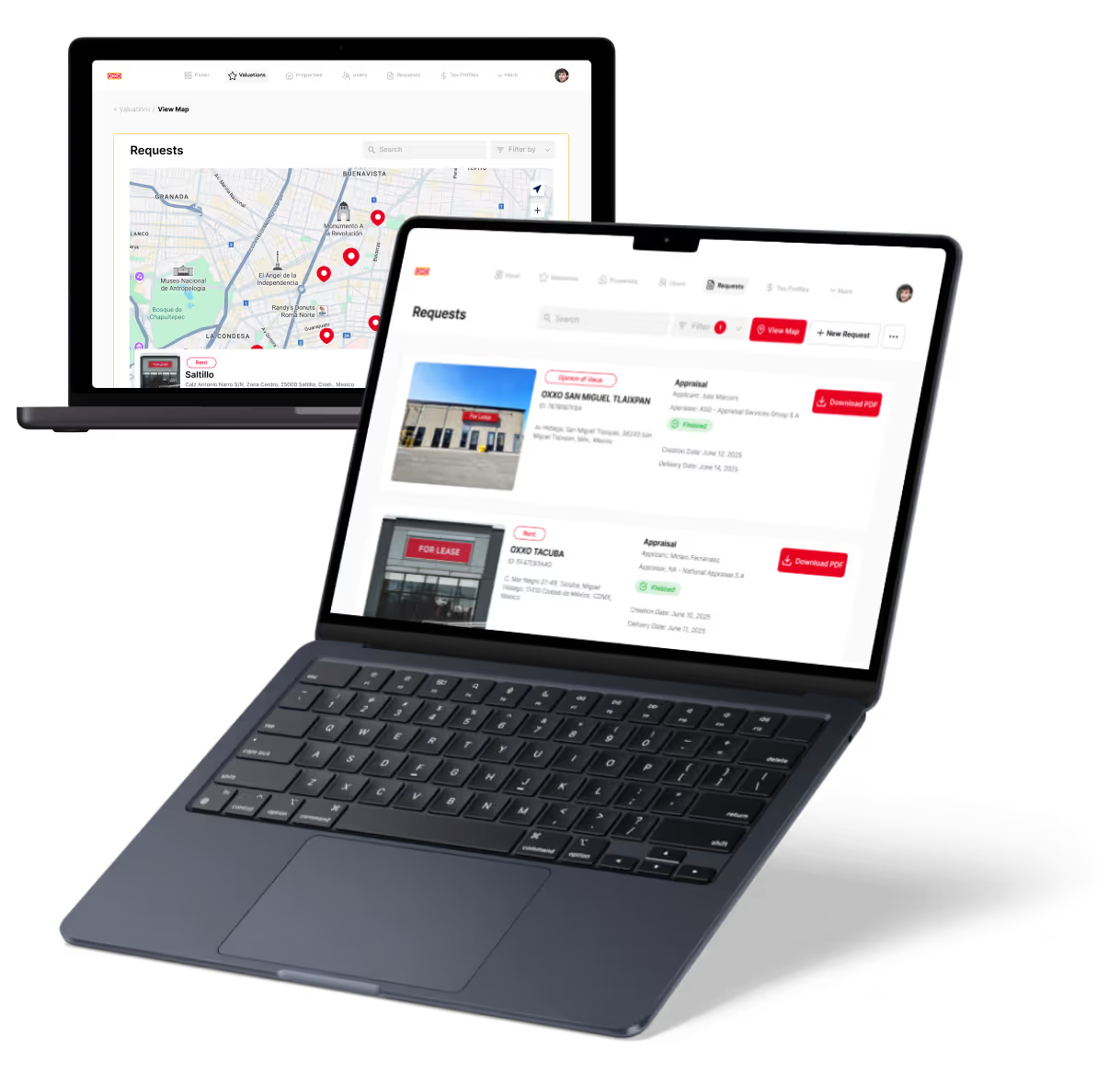
%20(Custom).avif)







